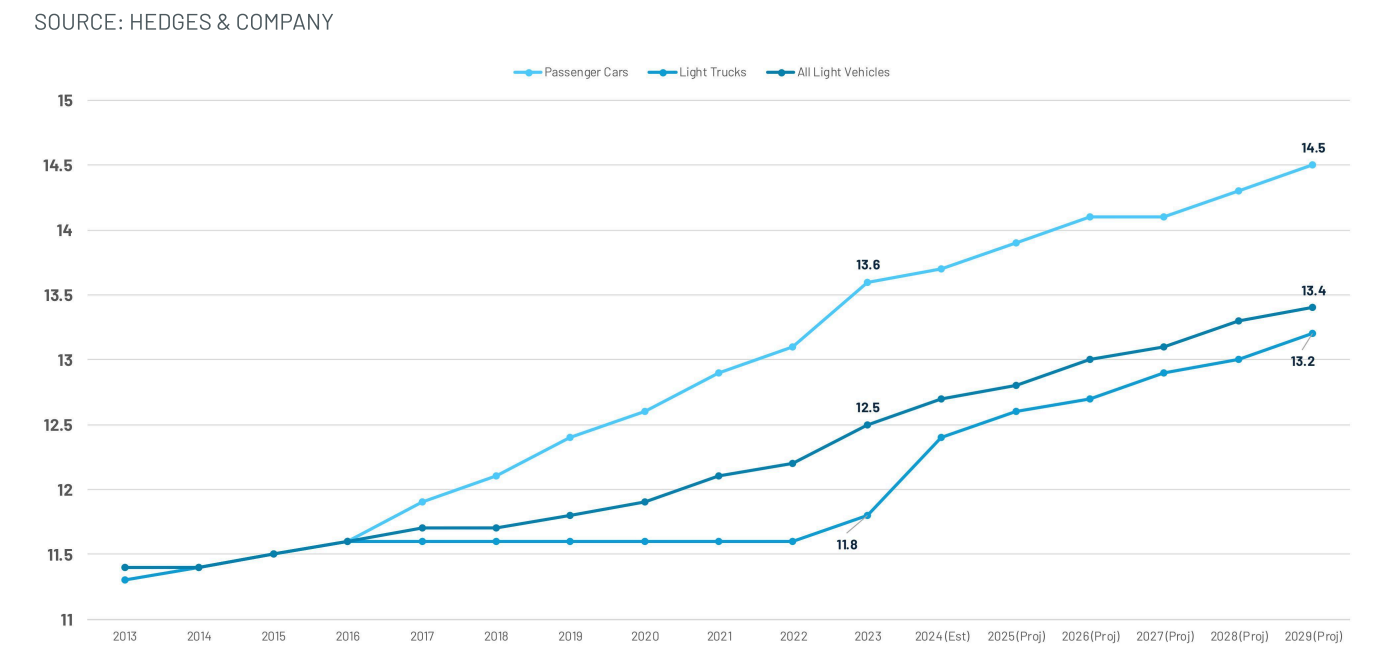
Average passenger car age now 14.5 years, nearly 13 years overall
By onMarket Trends
The average age of passenger cars in the U.S. has reached 14.5 years, and for light trucks is now 11.9 years, according to S&P Global Mobility’s latest data.
Overall, the average vehicle age is 12.8 years.
“This marks the second consecutive year of a two-month increase in vehicle age, signaling broader changes in consumer purchasing behavior, economic conditions, and the durability of modern vehicles,” S&P wrote. “For the mobility and aftermarket sectors, this trend introduces both significant challenges and opportunities, reflecting key automotive industry trends.”
The article states that while there was growth in new vehicle registrations last year, topping 16 million for the first time since 2019, the scrappage rate remained at 4.5%, showing that older vehicles are staying on the road longer.
“Notably, the number of passenger cars on U.S. roads has dropped below 100 million for the first time since the early 1970s,” the article states. “This decline is part of a gradual transition, with car registrations now making up only about 20% of the market for several years. The vehicle fleet continues to demonstrate impressive resilience even as it faces stress from high new and used prices and economic uncertainty, compounded by challenges in the automotive supply chain.”
Research provided in CCC Intelligent Solutions’ Crash Course Q1 2025 report shows that changes in the U.S. vehicle car parc are causing longer vehicle life; increasingly complex, costlier, and tech-driven repairs; more total losses, and cost inflation.
Kyle Krumlauf, director of industry analytics at CCC and co-author of Crash Course, called the transformation “anything but cyclical.”
CCC projects the average age to reach 13 by 2026.
S&P notes that vehicle age isn’t uniform nationwide. Northern Plains, Northwestern states, and Gulf Coast states have a substantially higher average age than the national average, with Montana leading the way at an average of five times higher than the national average, according to the article.
At the state level, S&P found that most are trending in average age similar to national data, except for Colorado and Hawaii, where age has increased at a much slower pace over the last five years. Comparatively, eight states, led by Mississippi and North Dakota, see average vehicle age go up faster than the national pace. Washington, D.C. also sees a higher rate.
S&P found that vehicle propulsion now plays a part in age as, for the first time in several years, there was “upward pressure” on the average age metric for battery electric vehicles (BEVs) as sales rate growth slowed. Average age still remains low, at 3.7 years.
For hybrids, age rates haven’t changed much. According to S&P, plug-in hybrids have stayed flat at 4.9 years, and traditional hybrids have reduced in average age from 6.9 to 6.4 years within the past year.
According to Mitchell’s latest data, claims frequency for repairable, collision-damaged battery electric vehicles (BEVs) increased to 3.12% in the U.S. and 4.48% in Canada in the first quarter of 2025.
“The increasing average age of vehicles reflects not only pressures such as inflation and supply chain disruption but also consumer preferences, regional nuances, and technological transitions,” S&P wrote. “Whether it’s targeting regional markets or preparing for alternative propulsion growth, industry stakeholders must stay nimble. The graying of the US fleet is more than a statistic — it’s a signal of shifting consumer behavior, economic realities, and market demands.”
S&P predicts that, overall, as vehicles reach six to 14 years, “a wave of service demand is expected to hit repair shops, part suppliers, and service providers across the country” for more frequent maintenance, repairs, and parts replacements.
Images
Featured image credit: igoriss/iStock

